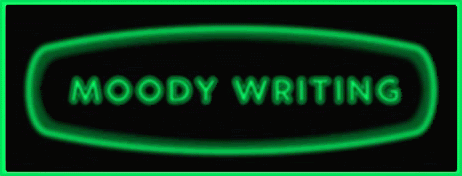A story is just a matter of revealing information to someone who doesn’t have that information. What can make the difference between a good story and a not so good one, is the order in which you reveal that information.
A bunch of information on the page will, by definition, be informative. But nobody wants to read an informative story, unless it’s in a newspaper. What people want from fiction is to read something that’s dramatic.
That doesn’t mean you need to fill it with D-RAMA! It means you have to have an understanding of what turns information about events and characters into an engaging and arresting situation.
How you combine bits of information can produce completely different kinds of story. Sometimes, different versions can be equally good. Sometimes it’s the difference between gripping and deathly dull.
The reader’s desire to know what happens next changes over the course of a story. What they already know affects what they’ve just learnt, and what they’re interested in finding out.
When you don’t know someone, you don’t really care where they’re from or where they grew up. As they become more important to you, their personal details become more interesting. If they develop into someone you care about or are drawn to, the need to know more about them can become all-consuming.
I point out a guy you’ve never seen, and then proceed to tell you all about him, and then right at the end I tell you, “And he’s just started dating your mother.” At which point you might suddenly find you’re very interested in him, but you were paying so little attention during my half-hour speech you didn’t take anything in. It works as a good surprise punchline, but you can’t make things interesting in hindsight.
If I tell you that guys there is dating your mother, and then I tell you all about him, you’ll pay attention, but only for a limited time. If what I tell you doesn’t lead to further questions, you’ll form your conclusion and move on. The idea this guy is dating your mother may not be all that fascinating if he’s just a regular guy.
If, after I inform you of their relationship, I mention the guy’s just been released by the police, suspected (but not proven) killer of six women... and you’re back on the hook.
But is that the best order to reveal the story? If I tell you the guy’s dating your mother, how long am I going to wait to tell you he’s a suspected serial killer?
What if I point out a guy who’s suspected of being the KFC Killer (poisons his victims but no one can work out what the secret ingredient is), but he got off using an ingenious defence? Oh, and also your mother just started dating him.
Here, the initial introduction to the character has something of interest to attract the reader’s attention (suspected psycho). Then the background information is directly related to/and expands on something that isn’t readily obvious (how he got away with it). And then the twist is something to make you want to know what happens next.
The key thing to remember as a writer, though, is that as I play with which order to put the information in, I, the writer, am aware of all the separate bits of information simultaneously. I am unable to look at it as a reader who is receiving one piece at a time.
That means it would be easy to consider each element of the story to be interesting in any order. Or to think one element is so interesting you can pad it with a bunch of general backstory. And you totally can. But you aren’t making the most of the individual parts of a story until you put them in the best possible sequence to show them off.
How one thing links to another. Why a piece of information is going to be of interest. Which character traits are relevant to the story. All these sorts of questions help to decide what to include and when to include them. But there’s no real way to know which is the best order to put the information in to produce the story you want to tell, other than trial and error. Try it one way, and then try it another way.
It can be tedious. Especially if you aren’t sure which is the best way round to have it. Luckily we have all been seen, heard and read so many stories that we have a natural instinct for what works and what doesn’t, given enough time (and a little help).
If you found this post intersting please give it a retweet. Cheers.







































































































14 comments:
I hope I've read enough to know the natural and best order!
You've made some great points here, and they are things I have noticed a lot while reworking my current WIP. The order of important information (and indeed knowing what is important!) is vital.
@Alex-sometimes the unnatural order is worth exploring.
@Kyra-you can create quite different effects in the reader just by switching things round.
this is very informative and that really is storytelling down to the basics, and it is a complex skill. This is a good way to help attract readers to your articles
I'm trying to figure this out with a story I'm working on. Where to start without boring the reader--and at the same time, give them information.
That was a hilarious clip!
@dopdavid-thanks.
@golden-it would help if things made a nice solid click when they were in the right position.
I agree. I always have to work with that. I usually need to reveal more earlier on so people aren't confused.
Another excellent installment of your advice on writing. Tweeting...
Proper story arrangement is a real challenge for me. I sometimes put the horse before the carriage and only catch it in editing the manuscript. I wonder if this has to do with the fact that I'm composing everything in my head and doing my best to get it all down on paper. Another thing I struggle with is incorrect word usage.
Great points. Information dumped in a random, haphazard way does not make a story. I just wish my students read this post.
Glad i read this post. I'm in the process of trying to figure out how best to rearrange my story now that I just finished the 2nd draft. wonderful tips!
Happy weekend!
Nutschell
www.thewritingnut.com
@Laura-me too.
@Lydia-cheers.
@Michael-no, I think that's the right way to do it. Get it down first, sort it out later
@Rachba-your students are very welcome here.
@nutschell-glad I could help.
Weird... I was just thinking about this today (http://inkably.com/damn-good-story/), then I came across your blog post.
@David-glad you popped in.